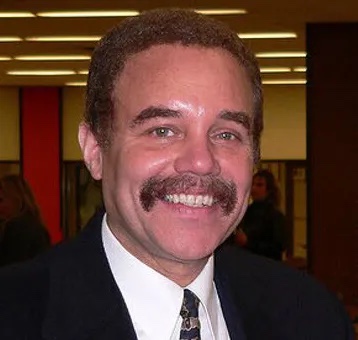Eric Cooper
 The United States education system has many challenges. The not the least of which is the support for building equity into all aspects of educational systems. The lack of equitable learning opportunities ultimately hurts everyone — not just the demographics who have historically been challenged by institutional and systemic racism. The zero-sum paradigm which assumes for countries to succeed they must have losers as well as winners, has been proven to be radically wrong by recent economic research. Recognizing the history of racism and the sustained embrace of an American caste system is central to improving the life trajectories of all citizens — not just those whose accident of birth places them in families who live in wealthy zip codes or provided the dominant skin tone.
The United States education system has many challenges. The not the least of which is the support for building equity into all aspects of educational systems. The lack of equitable learning opportunities ultimately hurts everyone — not just the demographics who have historically been challenged by institutional and systemic racism. The zero-sum paradigm which assumes for countries to succeed they must have losers as well as winners, has been proven to be radically wrong by recent economic research. Recognizing the history of racism and the sustained embrace of an American caste system is central to improving the life trajectories of all citizens — not just those whose accident of birth places them in families who live in wealthy zip codes or provided the dominant skin tone.
So what can be done to truly deliver on the promise of America? It starts with education reform which recognizes how beliefs about who is smart and who is not, who is considered beautiful and who is not, and most importantly, from the nation’s beginnings, that “freedom meant whiteness.” As Heather McGee has written in her scholarly book “The Sum of Us” (2021), “ten out of the eleven passages in the U.S. Constitution that referred to slavery were pro-slavery.” Understanding American history and how it has influenced who succeeds and who does not is a first step to changing the life trajectory of all schoolchildren and by extention all of the nation’s citizens. Education remains the single most important factor related to a recognition that social demography is not destiny.
I write these introductory comments as the president and founder of the National Urban Alliance for Effective Education (NUA). The NUA was founded in collaboration with The College Board and Columbia University’s Teachers College. We were founded on a belief that all students have the capacity to think and achieve at high levels, and when supported by excellent education opportunities will extend their current boundaries and support sucess in higher education or employment. As an organization we have partnered with dozens of school districts and tens of thousands of educators throughout the United States — from California and Washington to Minnesota, Georgia to Massachusets. This experience has solidified a belief that all educators possess the high moral purpose to help turn a failed system into one that secures a world-class education for all children. The caveat however is framed by the experience that educators need models which can guide them toward equitable learning environments.
NUA’s work has led to collaboration with dynamic education leaders. One of the most compelling has been a partnership with Dr. Rev Hillstrom who developed the CLEAR Model and brought it to his role as director of education equity in the Osseo school district located in Minnesota. We experienced first hand how CLEAR changed the beliefs of educators and guided them in how to accelerate the socio-emotional and academic achievement of Osseo students. CLEAR when embraced and incorporated by teachers in their classrooms transformed the learning environment. Among other interventions led by system educators, it empowered teachers and students alike to become responsive to how learning is accelerated and leads to improved communication, collaboration, critical and creative thinking. We witnessed first-hand how administrators and teachers engaged fully in using what they learned to impact systemic change. Rev and his team, as well as other administrators participated in summer institutes where hundreds of teachers learned to use protocols that engaged in productive discussions about race and culture. CLEAR provided a safe and secure framework where the culture of all students were seen as strengths rather than weaknesses. All cultures and families were supported in a loving and embracing learning environment. No single culture was perceived to be cancelled – instead all cultural and familial experience were respected and used to provide the famework for improved cognition and sustained learning. Prior knowledge and cultural experience was and is used as a scaffold for high intellectual performance and real-world education applications.
I would encourage visitors to this website to explore the transformative applications of CLEAR in their classrooms, districts and communities. In doing so users might avoid the pernicious and internecine community engagements which distract school communities from reaching the education missions they seek and embrace.